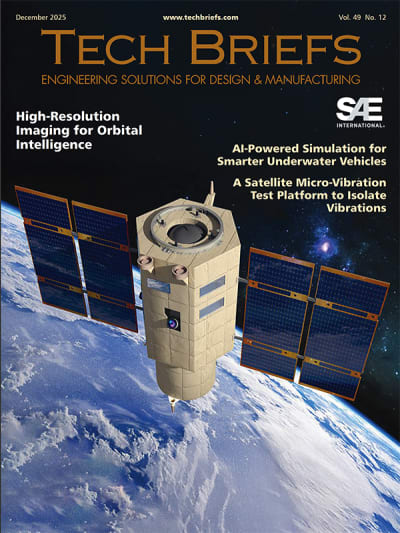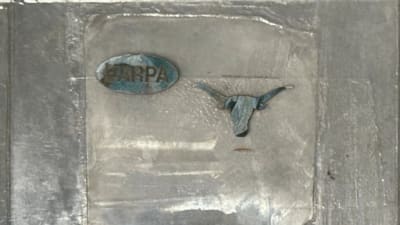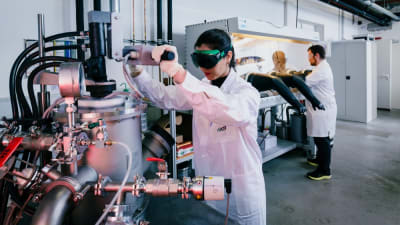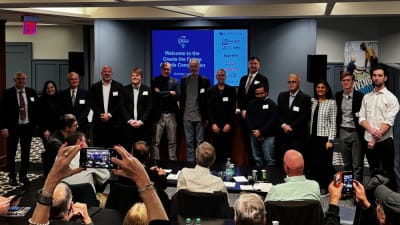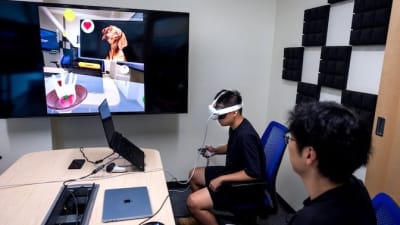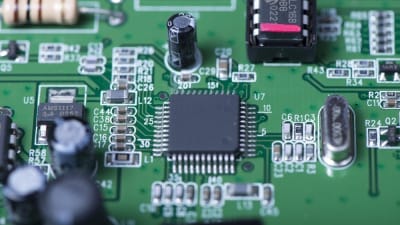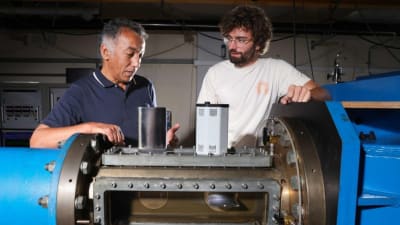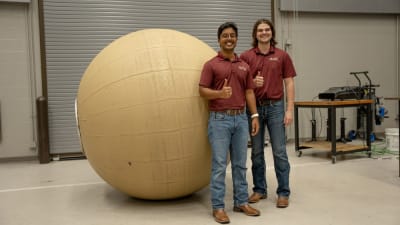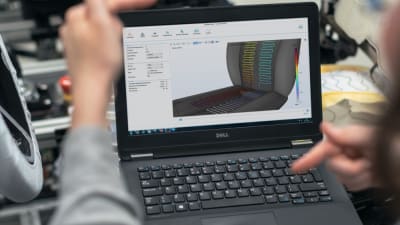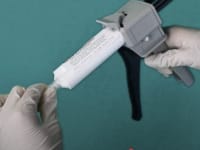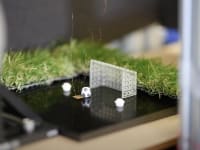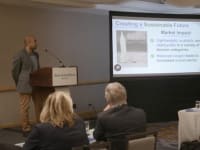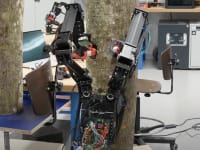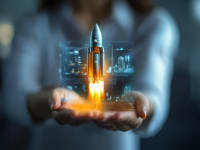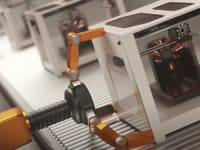61
170
-1
0
30
Blog: Semiconductors & ICs
Engineers at The University of Texas at Austin are leading an academic and industry all-star team that aims to revolutionize the production of semiconductor chips with a new 3D printing method.
Blog: Manned Systems
A new material might contribute to a reduction of the fossil fuels consumed by aircraft engines and gas turbines in the future.
Blog: Lighting
International research collaboration has unlocked a new approach that performs complex tensor computations using a single propagation of light. The result is single-shot tensor computing, achieved at the speed of light itself.
Blog: Materials
Researchers at the University of Sydney and start-up Dewpoint Innovations have developed a nanoengineered polymer paint-like coating that can passively cool buildings and capture water directly from the air — all without energy input.
Blog: Mechanical & Fluid Systems
Researchers have built a self-powered device that detects toxic amines in water using electrochemiluminescence (ECL).
Blog: Software
It's crucial at this point in time to think about the direction of AI development. If it's not done right, there will be serious global consequences.
Blog: Automotive
The 23rd annual Create the Future Design Contest was held November 7 in New York City. Read on to find out who took home the $25,000 grand prize!
Blog: Design
MIT engineers have developed a printable aluminum alloy that can withstand high temperatures and is five times stronger than traditionally manufactured aluminum.
Blog: Robotics, Automation & Control
Semiconductor manufacturers are turning to panel PCs — integrated computing solutions built for demanding production environments.
Blog: AR/AI
Some applications of generative AI are quite useful, some not so much. One way to tame its exponentially expanding hunger for power is to use it intelligently.
Blog: Power
EVs can have lower fuel costs and reduce emissions relative to cars that use gasoline, but they are only a practical option if drivers have convenient ways to charge them. To address this issue, a team of researchers at Penn State created a scalable framework to develop, analyze, and evaluate using streetlights as a low-cost, equitable EV charging option.
Blog: Photonics/Optics
Researchers have used the centuries-old idea of pinhole imaging to create a high-performance mid-infrared imaging system without lenses. The new camera can capture extremely clear pictures over a large range of distances and in low light, making it useful for situations that are challenging for traditional cameras.
Blog: AR/AI
A digital, voice-controlled hand could improve the convenience and accessibility of virtual and augmented reality by enabling hands-free use of games and apps. The prototype software was developed by computer scientists at the University of Michigan.
Blog: Materials
EPFL researchers have pioneered a 3D printing method that grows metals and ceramics inside a water-based gel, resulting in constructions for next-gen energy, biomedical, and sensing technologies.
Blog: Electronics & Computers
MIT researchers have replaced silicon with a magnetic semiconductor, creating a magnetic transistor that could enable smaller, faster, and more energy-efficient circuits.
Blog: Materials
What if the next battery you buy was made from the same kinds of ingredients found in your body? That’s the idea behind a breakthrough battery material made from natural, biodegradable components. It’s so natural, it could even be consumed as food.
Blog: Design
With increasing demands and requirements for building complex embedded systems that involve complex machines, the demand for resilient embedded systems is even higher today. Building safe and secure embedded systems is paramount in the context of pervasive embedded systems across multiple domains and industries. Read on to learn more.
Blog: Physical Sciences
An EPFL Ph.D. student has developed a 3D-printable clever device that significantly dampens the flow-induced vibration caused by rotating parts.
Blog: Robotics, Automation & Control
Two decades after the original idea, RoboBall is rolling across Texas A&M University. The RAD Lab is intent on sending the novel spherical robot into uncharted terrain.
Blog: Information Technology
Researchers at Sandia National Laboratories have developed brain-inspired AI algorithms that detect physical problems, cyberattacks, and both at the same time within the grid.
Blog: Power
Everybody’s talking about the problem of providing the electricity to power the growth of AI, but are we doing enough solve it?
Blog: Imaging
While the average pampered pup at home may lounge on the couch and demand belly rubs, the robotic dogs being created at Arizona State University are stepping up to take on some of the world’s most dangerous tasks.
Blog: Medical
Kennesaw State University’s Lei Shi is leading a research project that could alter how GI disorders are diagnosed and treated using virtual replicas of a human stomach.
Blog: Medical
A new AI model is much better than doctors at identifying patients likely to experience cardiac arrest. The linchpin is the system's ability to analyze long-underused heart imaging, alongside a full spectrum of medical records, to reveal previously hidden information about a patient's heart health.
Blog: Materials
Haozhe “Harry” Wang, assistant professor of electrical and computer engineering (ECE) at Duke University and an expert in developing new methods for manufacturing materials, continues to push the boundaries in MXene research.
Blog: Internet of Things
All the pieces are in place for agriculture to become smarter — it’s time to move ahead. Here’s how to move to Agriculture 4.0.
Blog: Design
By turning simulation into custom apps, companies are empowering their workforce to make faster, smarter decisions across every part of the business — from the lab to the field.
Blog: Unmanned Systems
A new study introduces a novel way to reach a largely unstudied stretch of the atmosphere, between 30-60 miles above Earth’s surface, the mesosphere. Researchers have introduced a new way to explore it: lightweight flying structures that can float using nothing but sunlight.
News: Design
Johns Hopkins University researchers have grown a novel whole-brain organoid, complete with neural tissues and rudimentary blood vessels — an advance that could usher in a new era of research into neuropsychiatric disorders such as autism.
Top Stories
Blog: Manufacturing & Prototyping
2025 Holiday Gift Guide for Engineers: Tech, Tools, and Gadgets
Blog: Power
Using Street Lamps as EV Chargers
INSIDER: Semiconductors & ICs
Scientists Create Superconducting Semiconductor Material
Blog: Materials
This Paint Can Cool Buildings Without Energy Input
Blog: Software
Quiz: Power
Webcasts
 Upcoming Webinars: AR/AI
Upcoming Webinars: AR/AI
The Real Impact of AR and AI in the Industrial Equipment Industry
 Upcoming Webinars: Motion Control
Upcoming Webinars: Motion Control
Next-Generation Linear and Rotary Stages: When Ultra Precision...
 Podcasts: Manufacturing & Prototyping
Podcasts: Manufacturing & Prototyping
SAE Automotive Engineering Podcast: Additive Manufacturing
 Podcasts: Defense
Podcasts: Defense
A New Approach to Manufacturing Machine Connectivity for the Air Force
 On-Demand Webinars: Manufacturing & Prototyping
On-Demand Webinars: Manufacturing & Prototyping
Streamlining Manufacturing with Integrated Digital Planning and Simulation
